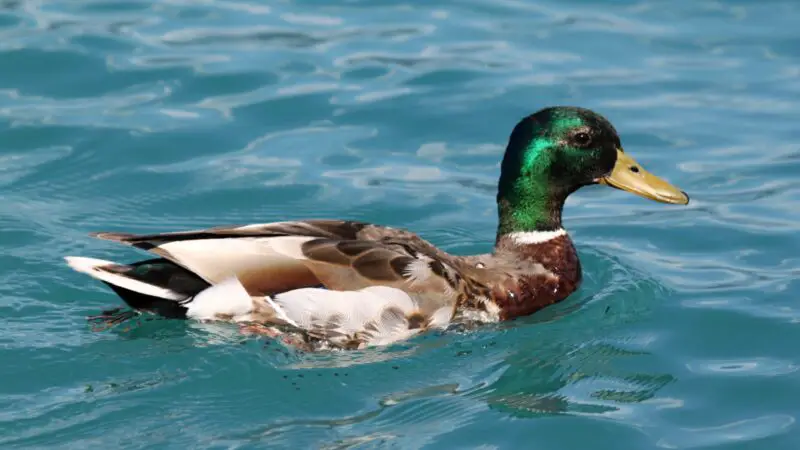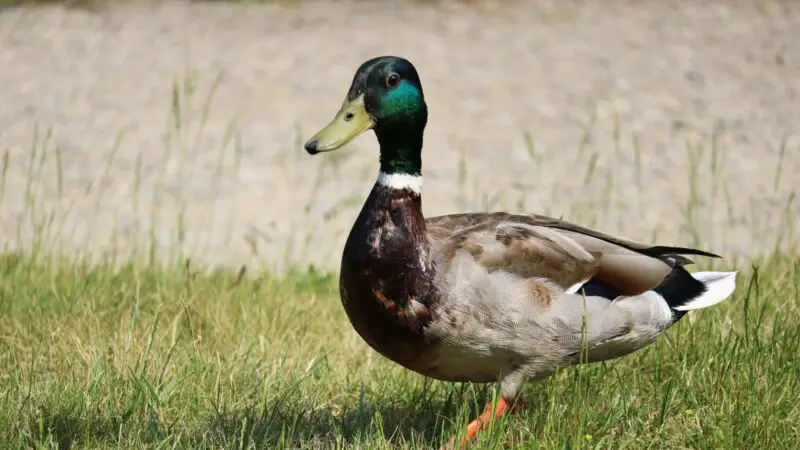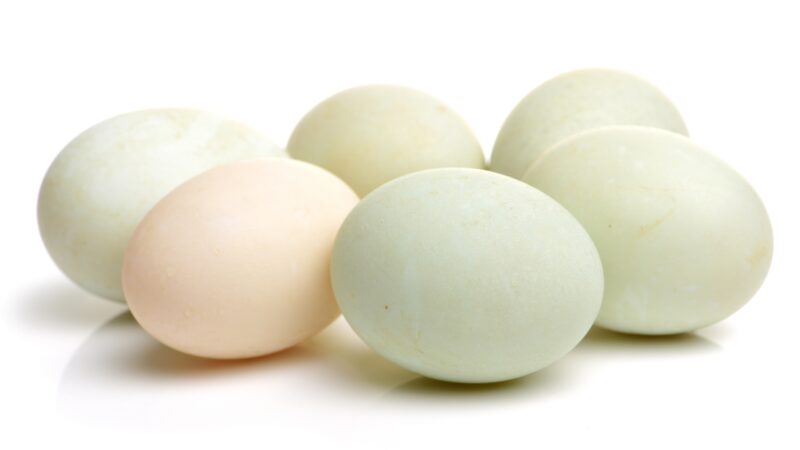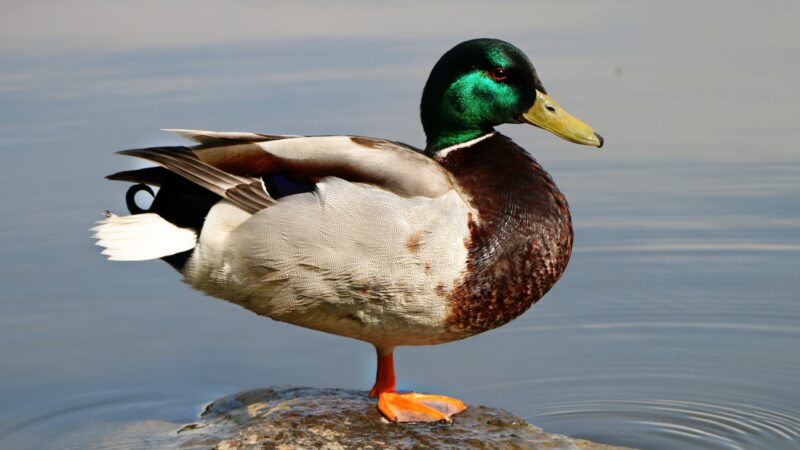If you want to raise a rare duck breed with a very striking feature, no need to look further. The Dutch Hookbill duck is just waiting to be discovered. Not only do these small ducks make great pets, but can also give colorful eggs.
The Dutch Hookbill is an ancient domestic duck known for its distinctive hooked beak. This old duck breed is considered a “bantam” and is smaller than standard ducks. But despite being good egg layers and sweet pets, Dutch Hookbill ducks are not yet recognized by the American Poultry Association (APA).
Known in Holland as Krombekeend or Kromsnaveleend, the Dutch Hookbill duck is a one-of-a-kind breed. Although not considered a standard breed, this rare breed is slowly attracting breeders from different parts of the world. This is because of their interesting characteristics.
Dutch Hookbill Duck History

The history of the Dutch Hookbill duck is unclear, except that it has been around since the 17th century. The earliest recorded information about Dutch Hookbill ducks appeared in the Ornithologiæ Libri Tres, which was published in 1676. This book is in Latin, and the author is Francis Willughby, an English ichthyologist and ornithologist.
The Dutch Hookbill ducks were brought to the US only in 2000. Dave Holderread was among the first breeders to import them, and he described it in his 2011 book, Storey’s Guide to Raising Ducks. The Dutch Hookbill duck was admitted to the British Waterfowl Standards in 1997 but is not yet recognized by the American Standard of Perfection.
Where Do Dutch Hookbill Ducks Originate?
The country of origin of the Dutch Hookbill duck is still unknown. This is even though its name indicates it originated in the Netherlands.
Meanwhile, a theory suggested that this duck breed came from Asia and that it was developed using Indian Runner ducks. Yet, there are no official documents stating the exact origin of the Dutch Hookbill.
Are Hookbill Ducks Rare?

Hookbill ducks are rare. The population of this old duck breed started to decline in the 20th century due to water pollution in their habitat and the decrease in demand for duck eggs.
In fact, this ancient duck breed almost went extinct in 1980. Fortunately, Dutch breeder Hans van de Zaan started a conservation program to save the breed.
Are Dutch Hookbill Ducks Endangered?
The Dutch Hookbill duck breed has been considered an endangered species by the Food and Agriculture Organization (FAO) since 2007. Both the Livestock Conservancy in the US and the Foundation for Rare Pet Breeds in the Netherlands, or Stichting Zeldzame Huisdierrassen (SZH) have listed this duck breed under the “Critical” category.
Dutch Hookbill Duck Identification
What Do Dutch Hookbill Ducks Look Like?
As the name implies, Dutch Hookbill ducks have an unusual downward curving beak. They also have stocky bodies with short wings and legs.
This rare duck comes in three color variations – dusky, white-bibbed dusky, and white. Other colors are available but are not accepted by British standards and are uncommon in the United States.
The dusky Hookbill mallards have dusky (somewhat dark) body feathers, hence the name. They also have a black head with some green lusters and a blue or slate-gray beak, but without a white ring on their necks. This color variety looks similar to the white-bibbed dusky, except that the latter has a distinct white bib on its chest.
How to Tell Male From Female Dutch Hookbill Ducks?
Male and female Dutch Hookbill ducks have the same feather colors, but it’s not that difficult to spot the difference, especially once they become adults.
Mallards have some curly feathers on their tails, while ducks have straight tail feathers. Adult males are also generally larger than females. There is no such thing as true autosexing ducks, though.
What Are the Distinct Characteristics of a Dutch Hookbill Duck?
As stated earlier, Dutch Hookbill ducks have a unique hooked beak, which sets them apart from other breeds of ducks. Their bill is curving downward and slightly to one side.
This gives the duck breed a distinctive appearance, and hunters believe that it is helping them distinguish Hookbill ducks from wild ducks. They are also excellent egg layers.
How Long Does a Dutch Hookbill Duck Live?
Domesticated Dutch Hookbill ducks can live between 8 and 12 years unless they are sold for meat. Nonetheless, the actual lifespan depends on the diet, living conditions, and overall health of the individual.
But in the wild, they are likely to live shorter due to predators and other habitat issues. In general, this duck breed is incredibly healthy.
What Do Dutch Hookbill Ducks Eat?
Dutch Hookbill ducks are omnivores, which means that they eat a variety of animals and plant material. This includes insects, crustaceans, small fishes, and aquatic plants.
When raised by hand, they can be fed with fresh fruits, vegetables, and commercial feed. But then, their main diet is corn, wheat, soybean meal, and other protein sources.
How Big Do Dutch Hookbill Ducks Grow?
Dutch Hookbill ducks are a small to medium-sized breed and can grow between 18 and 22 inches (4.57 and 55.8 cm) long. As mentioned earlier, male ducks are significantly bigger than females. The actual size of an individual Hookbill duck also depends on the strain, diet, and living conditions.
Are Dutch Hookbill Ducks a Heavy Breed?
Dutch Hookbill ducks are not considered a heavy breed but rather an average one. Adults of both sexes typically weigh around 3-4 lbs (1.4-1.8 kilos).
Dutch Hookbill Duck Wingspan
The average wingspan of a Dutch Hookbill duck is around 2-3 feet (61-90 cm) long, depending on the individual bird. But as expected, males have a longer wingspan as compared to females.
What Is Dutch Hookbill Duck Known For?
Dutch Hookbill ducks are an excellent multi-purpose breed. They are bred for meat and egg production and can be great pets, too.
This duck breed is a very dependable animal companion and a gorgeous ornamental bird. However, their carcass is small, and their meat is not for commercial use. Not to mention, these rare ducks should be preserved.
Dutch Hookbill Ducks Temperament
Dutch Hookbill ducks are known for being calm, friendly, and social birds. They are generally docile, easy to handle and enjoy being around ducks and humans.
These ancient birds tend to be curious about their surroundings, which makes them fun to watch. Hookbill ducks also do well in both confinement and free-range systems.
Dutch Hookbill Duck Egg Production

At What Age Do Khaki Dutch Hookbill Ducks Start Laying Eggs?
Dutch Hookbill ducks reach sexual maturity very rapidly, and hens may start to lay eggs once they are about 16 weeks (4 months) of age.
When Do Dutch Hookbill Ducks Lay Eggs?
Like most duck breeds, Dutch Hookbill ducks usually lay eggs in the spring and summer (between mid-March and the end of July). However, some strains can also lay eggs in the latter part of winter.
How Often Do Dutch Hookbill Ducks Lay Eggs?
Healthy Dutch Hookbill hens typically lay eggs regularly (one egg every day) during their peak season and can continue for several years. Nonetheless, Ducks are seasonal egg layers. This means that their egg production increases in the spring and summer but reduces dramatically during colder months and winter due to the lack of daylight hours.
What Color Are Dutch Hookbill Duck Eggs?
Dutch Hookbill duck eggs can be blue, green, or white. The actual color of their eggs depends on the individual bird, as well as the strain or subtype.
Note that the color of duck eggshells does not affect the quality or taste of the egg. Instead, it is determined by the pigments in the hen’s oviduct, just like in chickens, geese, and turkeys.
How Many Eggs Do Dutch Hookbill Ducks Lay?
Dutch Hookbill ducks are excellent egg layers, and healthy hens lay between 100 and 225 large eggs annually. This is equivalent to 2-4 eggs a week. In some cases, they can lay more than 225 eggs in a year.
Do Dutch Hookbill Ducks Go Broody?
Dutch Hookbill ducks go broody and are generally dedicated mothers. Broodiness is the state wherein hens tend to stop laying eggs and prefer sitting on them until they hatch.
But due to selective breeding, domesticated ducks are less broody than wild ducks. Note also that ducks in general are less likely to go broody than chickens.
Dutch Hookbill Ducks Care Tips

Because of their small size, breeding and raising Dutch Hookbill ducks is not as difficult as you think. They are also sturdy birds, self-sufficient, and disease resistant. But just like raising other duck breeds, it needs a fair amount of work and commitment.
To make sure your ducks are handled well, here are some tips on how to care for Hookbill ducks:
- Choose healthy ducks. Dutch Hookbill ducks are generally healthy, but make sure to check if the ducklings you buy have no defects or injuries.
- Feed them a balanced diet. Dutch Hookbill ducks enjoy green vegetables and fruits. For commercial feed, give them a mixture of barley, corn, and wheat.
- Provide access to clean water. Dutch Hookbill ducks are excellent swimmers. If there is no pond nearby, you can offer them a small kiddie pool.
- Provide a safe and comfortable breeding environment. This includes a coop or pen where they can safely lay eggs and take care of their young.
- Provide a nest. Ideally, a good duck nest measures 12-18 inches cube. But then, it should not be big enough to fit two ducks.
- Provide appropriate lighting and temperature. Their living space should always be dry, warm, and well-ventilated.
- Provide a suitable mate. Ducks are generally social animals, and they love to mate. Ideally, there should be one male for every 2-3 ducks.
- Gather and incubate eggs. Since ducks don’t go broody often, you should have a reliable incubator. The incubation period for duck eggs is around 28 days. If you are not using a wet-bulb thermometer, the temperature should be 99-100°F (37.2-37.7°C). The relative humidity is around 60-70%.
- Always keep them healthy. Regularly check the condition of your ducks and look for any signs of illness or disease. If you notice any symptoms or unusual behavior, consult a veterinarian immediately.
- Protect them from predators: Ducks are vulnerable to attacks from predators such as foxes, raccoons, and snakes. Secure their coop properly, especially at night.
Can Dutch Hookbill Ducks Fly?
Dutch Hookbill ducks can fly. Despite having short wings, they have excellent flight capability, especially the younger ones.
However, domesticated ducks prefer running away to escape from potential predators instead of flying. If you plan to clip their wings, make sure you do it properly. Clip their flight feathers only when they are fully grown.
Is Dutch Hookbill Duck Good to Eat?
Dutch Hookbill ducks are good to eat. Like most duck breeds, their meat is tender, moist, and delicious. Their dark meat somehow tastes like turkey or goose.
But since they are small and lightweight, their meat is not available commercially. You can cook your Hookbill ducks if you want. But remember, their population should be preserved.
Are Dutch Hookbill Ducks Loud?
Dutch Hookbill ducks are not considered loud birds. Males make noises when they try to attract females, but the latter is quite louder.
Generally speaking, ducks are not as vocal and loud as chickens and geese. Once Hookbill ducks make sounds, they are not a significant source of noise in your backyard and will not disturb your nearby neighbors.
Are Dutch Hookbill Ducks Good Pets?
Dutch Hookbill ducks are good pets. As stated earlier, these handsome ducks are docile, easy to manage, and friendly to humans.
But although they are affectionate, don’t expect them to curl up on your lap. Ducks also dislike being touched from time to time. If you want to keep them as pets, you should know how to handle them correctly.
How Many Hookbill Ducks Are There in 2021?
There are no official records on how many Dutch Hookbill ducks there are in 2021. But as mentioned earlier, the Livestock Conservancy currently lists this rare duck breed under the “Critical” category.
This means that there are less than 1,000 birds worldwide, and only less than 500 of them are in the US, with only 5 (or fewer) breeding flocks.
